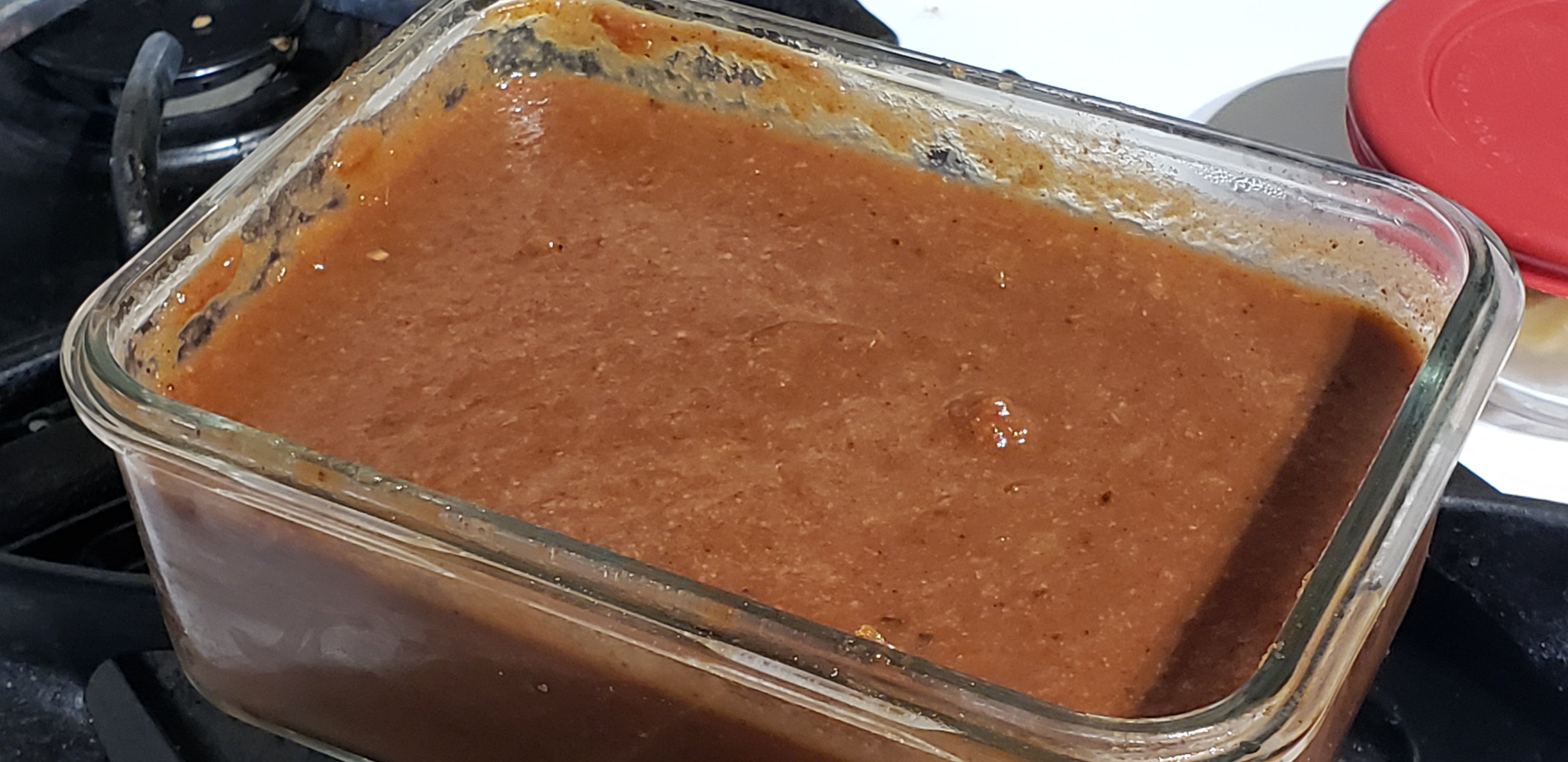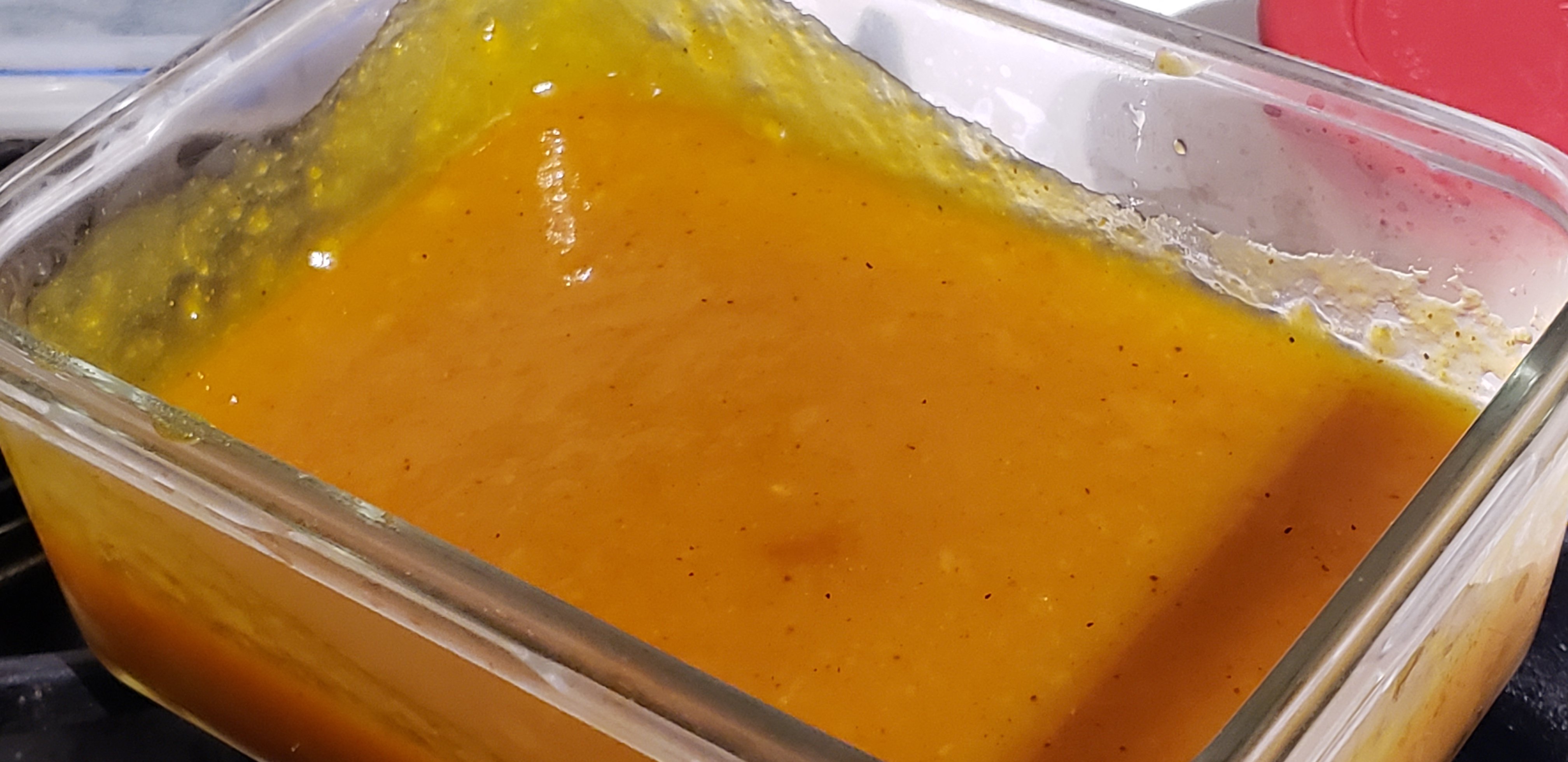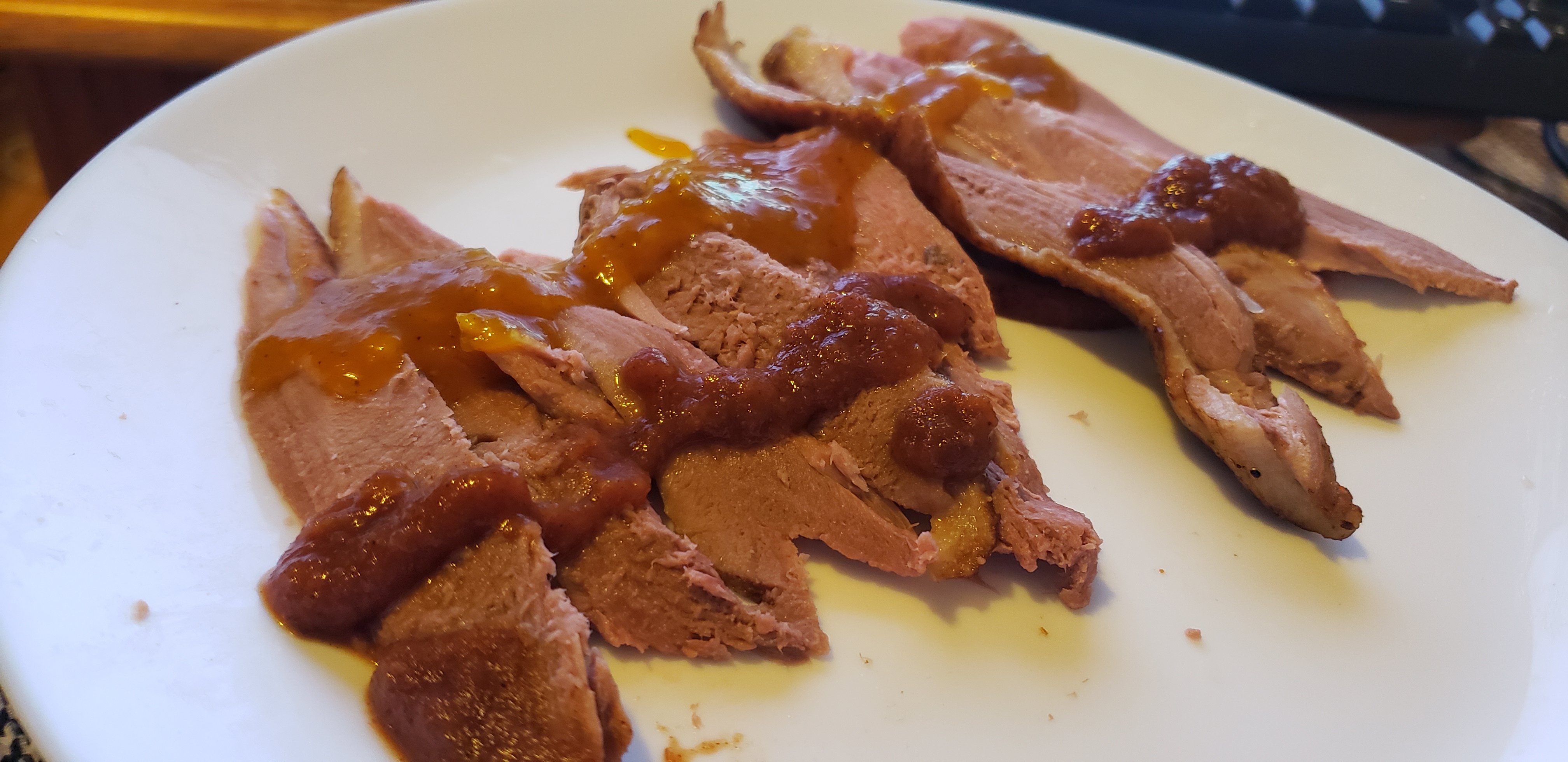Foodies,
Grilling season is here and so is the demand for barbecue and steak sauces to go with all your grilled meat, fish and poultry. I have been making my own homemade red barbecue sauce for years, and the secret to it is actually really straightforward. A barbecue sauce is really nothing more than a homemade tomato ketchup with extra spices, seasonings, a rich sweetener, a little vinegar and the key ingredient of liquid smoke added. The holy grail of barbecue sauces, of course, is steak sauce. Unlike barbecue sauce, steak sauce is brown colored, spicier, less sweet and far more pungent.
While there are a myriad of commercial and craft sauces available at your local grocery store and barbecue supplier, the most popular by far are still Heinz 57, A1 and HP which have legendary standing in North America and Europe due to both long history and wide commercial reach. Foodies have been trying to recreate these for years as have I. After vast research including examining the actual ingredient list of the commercial products – something I suspect many famous clone recipe writers actually never bothered to do when concocting their own clones – and years of experimenting, I’m happy to share my recipes for a Memphis style red barbecue sauce, homemade Heinz 57, A1 and HP sauces and a vastly different mango curry barbecue sauce all for your pleasure and comparison.
To make things easier, the recipes are divided into distinct ingredient categories: your liquid base, aromatic vegetables and dried fruit which always need to be sautéed first, fruit, and lastly the varied spices and seasonings
MEMPHIS STYLE RED BARBECUE SAUCE
AROMATICS
1 large Onion
6 cloves Garlic
FRUIT
8 large tomatoes
BASE
1/4 cup vinegar or lemon juice
1 cup sugar
4 Tbsp Molasses
OPTIONAL 3/4 cup Spirit (Rum, bourbon, brandy, Scotch whisky, etc.) OR 1 1/2 cups beer, cider or wine (See Substitution Notes below for endless variations) OR 1 1/2 cups fruit juice or coffee OR 1 1/2 cups fruit purée
SPICES/SEASONINGS
1 tsp Black Pepper
1 tsp Cayenne, Chipotle or Habanero Pepper or red chili flakes
1 tsp dried rosemary
2 tsp Mustard powder
1 tsp Salt
1 tsp Turmeric
1 tsp dried thyme
1 tsp dried parsley
2 Tbsp Worcestershire
2 tsp liquid smoke
Heinz 57
AROMATICS
1 large Onion
6 cloves Garlic
1 Tbsp fresh Ginger
1/4 cup Raisins
FRUIT
2 large Apples
6 large Tomatoes
BASE
1 1/2 cups Vinegar, 1 to start
1 cup Sugar, caramelized or 1 cup brown sugar
SPICES/SEASONINGS
1 tsp Black Pepper
1 tsp Cayenne, Chipotle or Habanero Pepper or red chili flakes
1 tsp Celery seed
2 tsp Mustard powder
1 tsp Salt
1 tsp Turmeric
2 Tbsp Worcestershire
A1
AROMATICS
1 large Onion
6 cloves Garlic
1/4 cup Raisins
FRUIT
8 large Tomatoes
BASE
1 1/2 cups Vinegar, 1 to start
1 cup Sugar, caramelized or 1 cup brown sugar
1 Orange, flesh, juice and outer peel
SPICES/SEASONINGS
1 tsp Black Pepper
1 tsp Cayenne, Chipotle or Habanero Pepper or red chili flakes
1 tsp Celery Seed
2 tsp Mustard powder
1 tsp Salt
2 Tbsp Worcestershire
HP
AROMATICS
1 large Onion
6 cloves Garlic
1 Tbsp fresh Ginger
1/4 cup Dates, pitted and diced
FRUIT
4 Apples, seeded and diced
2 Plums, seeded and diced
2 Tomatoes, diced
BASE
1 1/2 cups Vinegar, 1 to start
1 cup Sugar
4 Tbsp Molasses
1/2 cup Tamarind paste
SPICES/SEASONINGS
1 tsp Allspice
1 tsp Black Pepper
1 tsp Cayenne, Chipotle or Habanero Pepper or red chili flakes
1 tsp Cinnamon
1 tsp Cloves
2 tsp Mustard powder
1 tsp Nutmeg
1 tsp Salt
2 Tbsp Worcestershire
MANGO CURRY YELLOW BARBECUE SAUCE
AROMATICS
1 Onion
6 cloves Garlic
FRUIT
2 Yellow or Orange tomatoes
4 large Mangoes
1 cup diced \Pineapple
2 Passion Fruit, seeded and pulped
BASE
1 cup vinegar, 1/2 to start
1/2 cup White Wine
1 cup Sugar
2 Tbsp Molasses
1 Lemon, flesh, juice and outer peel
SPICES/SEASONINGS
1 tsp Cayenne, Chipotle or Habanero Pepper or red chili flakes
1 tsp Salt
2 tsp Mustard powder
1 tsp Turmeric
1 tsp Allspice
1 tsp Cinnamon
1 tsp Cloves
1 tsp Nutmeg
1 Tbsp Curry Powder

STOVETOP DIRECTIONS:
-
Caramelize the 1 cup of sugar with 1/2 cup of vinegar gently if not using molasses and set aside. You want this to still be in a very liquid state after caramelization.
-
Sauté all the aromatics in a large saucepan until soft and brown
-
Add in the fruit and continue sautéeing until soft and brown
-
Add in all the sweet/sour base ingredients including the caramel sugar if using, reserving 1/2 cup of vinegar to the side if there is any that can be put aside so you can add later to taste.
-
Bring to a boil and then lower heat to a low simmer. Add in all your spices and seasonings. Cook until the mixture is thoroughly cooked through and softened.
-
Blend the sauce together in the saucepan with an immersion stick blender or throw into a standard heatproof blender, blend and then return to the saucepan.
-
Simmer away until sauce has been thickened to your liking due to evaporation.
-
Taste and adjust the vinegar, sweetener, spices and seasonings according to your own taste. Go easy here, especially when adding more liquid smoke, vinegar and salt. Remember, you can always add but you can’t take away. For my own personal tastes, I use the full amount of vinegar stated in my recipes above but do not increase the amount of seasonings or spices or herbs beyond what I’ve listed. That’s just me, though.
-
Let the sauce cool and then bottle and store in the fridge. Feel free to do a hot water canning seal to preserve for longer periods.
SLOW COOKER DIRECTIONS:
-
Caramelize the 1 cup of sugar with 1/2 cup of vinegar gently if not using molasses and set aside. You want this to still be in a very liquid state after caramelization.
-
Sauté all the aromatics in a large saucepan until soft and brown
-
Add in the fruit and continue sautéeing until soft and brown
-
Put the aromatics and fruit in a slow cooker crock, add in all the sweet/sour base ingredients including the caramel sugar if using, reserving 1/2 cup of vinegar to the side if there is any that can be put aside so you can add later to taste, and the spices and seasonings. Stir to combine.
-
Set the cooker to low and cook for 3-4 hours. Check to make sure everything is cooked through and softened and adjust cooking time as needed.
-
Blend the sauce together in the crock with an immersion stick blender or throw into a standard heatproof blender, blend and then return to the slow cooker
-
Simmer away on low for another 1-2 hours until sauce has been thickened to your liking due to evaporation
-
Taste and adjust the vinegar, sweetener, spices and seasonings according to your own taste.
-
Let the sauce cool and then bottle and store in the fridge. Feel free to do a hot water canning seal to preserve for longer periods.
PRESSURE COOKER/INSTANT POT DIRECTIONS:
-
Caramelize the 1 cup of sugar with 1/2 cup of vinegar gently if not using molasses and set aside. You want this to still be in a very liquid state after caramelization.
-
Sauté all the aromatics in the pressure cooker using the Sauté setting until soft and brown
-
Add in the fruit, sweet/sour base ingredients including the caramel sugar if using and reserving 1/2 cup of vinegar to the side if there is any that can be put aside so you can add later to taste, the spices and the seasonings. Stir to combine. Seal the pressure cooker, set the pressure to high and set the time for 30 minutes. When time is done, let pressure subside naturally for 10 minutes or use the pressure release valve for instant release.
-
Open the cooker. Check to make sure everything is cooked through and softened. It’s highly unlikely but if it’s not cooked through, bring back to pressure and cook again for as long as needed. When done, blend the sauce together in the saucepan with an immersion stick blender or throw into a standard heatproof blender, blend and then return to the pressure cooker.
-
Turn the cooker to the Simmer setting (or Sauté and Low heat setting if you don’t have a simmer option) and cook away until sauce has been thickened to your liking due to evaporation.
-
Taste and adjust the vinegar, sweetener, spices and seasonings according to your own taste.
-
Let the sauce cool and then bottle and store in the fridge. Feel free to do a hot water canning seal to preserve for longer periods.
-
Remember to wash and clean the cooker lid thoroughly as soon as possible as the rubber sealing gasket is prone to keeping aromas and is especially susceptible to retaining vinegar aroma.
SUBSTITUTION NOTES
-
You will find some barbecue sauce recipes that call for hot sauce instead of cayenne pepper. Hot sauce is just fresh cayenne chilies ground with salt, sugar and vinegar. Don’t bother and just use dried ground cayenne, chipotle or habanero pepper or red chili flakes. You are already using the other three ingredients in the recipe. Alternatively you can sub in fresh hot chilis as well. Go easy here whatever you decide to use, you are not making a chili sauce which is a different condiment. Unless of course you deliberately want a very hot barbecue or steak sauce.
-
When using fresh fruit, you will notice my ratio of 8 whole fruit in each recipe. (Note that I count tomato as a fruit.) That’s because you’re trying to get about the equivalent of a standard 28 oz size can or jar of ready made sauce. Of course, what you end up with will vary because fruits come in all sizes and aren’t 100% uniform.
-
For the barbecue, Heinz 57, A1 and HP sauces, you can substitute all the fruit out for either 2 cans of tomato paste with 4 cups of water or a 28 oz can of ready made tomato sauce or canned tomatoes. (You cannot do this with the fruit in the mango curry sauce, of course). I generally prefer fresh myself.
-
If you’re wondering why you can substitute all the fruit in the HP and Heinz 57 sauce recipes for just tomatoes, it’s because the modern commercial sauces use only tomatoes in their recipe. This has caused many complaints amongst consumers because it used to contain apple and plum as well and they they were taken out of the recipe as tomatoes are cheaper commercially.
-
For other barbecue sauce flavors, simply switch out the alcohol for 1 1/2 cups of the fruit purée, juice or flavored liquid of your choice. For example, you could switch out the alcohol for cola, black coffee, ginger beer, puréed blueberries, guava paste, apple juice, etc. The possibilities are infinite. Note that if you use an alcoholic liqueur or a non-alcoholic fruit syrup, their added sugar will affect the taste of the finished sauce so you may wish to adjust the initial amount in the sweet/sour base accordingly. I would advise you to avoid using them if you can due to lack of control over the added sugar amount.
-
A true Memphis style red sauce does not have the addition of alcohol or any other flavor components for that matter. You may especially want to omit anything with alcohol or caffeine if minors will consume.
-
When flavoring the sauce with alcohol, note that spirits are vastly more intense in flavor than wine, beer and cider which is why only 3/4 cup is used. You can of course always increase or decrease to taste.
-
You can substitute 1 TBSP of onion powder and 2 tsp of garlic powder for fresh onion and garlic, respectively, in a pinch. If doing the latter, make sure you are using actual garlic powder or granulated garlic and not garlic salt.

GENERAL NOTES
-
The big difference between a barbecue sauce and a steak sauce is the large proportion of one key ingredient that gives the latter it’s pungency and tartness – VINEGAR. A huge amount more than you would put into a barbecue sauce. In fact, they have more in common with Carolina style vinegar based barbecue sauces than they do with Mephis style tomato based sweet sauces. You’ll even find barbecue sauce recipes that actually call for no balancing vinegar, lemon juice or acid at all. So one could argue steak sauce is really just a blend of Memphis and Carolina style barbecue sauces together at their heart.
-
Barbecue sauce on the other hand has three key ingredients that set it apart from steak sauce: herbs, liquid smoke and alcohol. The liquid smoke is especially essential. Without it, you basically just have homemade ketchup. Barbecue sauce also doesn’t involve other fruit unless you are specifically using it to flavor the sauce (as per Substitution Notes above). You can omit the alcohol and flavor additions completely if desired for a true traditional Memphis style sweet red sauce.
-
Always use a quality malt, cider or wine vinegar. Balsamic will work but I suggest using a thinner and less expensive one and certainly not your vastly superior 2 to 4 leaf balsamic which are condiments in and of themselves.
-
Because the acidity is not such a major flavor component of barbecue sauce, you can use either vinegar or lemon juice or even lime juice or tamarind paste for a more interesting flavor. You cannot, however, substitute these other ingredients for vinegar in any of the other recipes which are quite dependent on the large amount of vinegar. Note that the curry mango sauce already calls for both vinegar and lemon to be used and the HP sauce already calls for tamarind paste.
-
The major difference between Heinz 57 and A1 steak sauce is that A1 uses orange as one of its key flavor components whereas Heinz 57 uses ginger instead. Nothing stops you from adding both if you desire to either sauce.
-
To get the hickory versions of A1 and Heinz 57, simply add 2 tsp of liquid smoke as you would to a red barbecue sauce.
-
Apples, dates and plums are key ingredients of both the HP and Heinz 57 sauces because they add a thicker more viscous texture. You can use only tomatoes if desired but remember that and you will have to both cook down due to the presence of far more liquid and adjust flavor to your taste accordingly. Or you can use large Roma tomatoes instead which have much less water content.
-
There is a fruity version of HP sauce on the market as well. To clone that, you simply add the mangoes, pineapple and passion fruit from the curry mango sauce to the existing HP sauce recipe. I generally find this much too sweet even for my liking and prefer just the standard recipe.
-
The curry mango sauce uses far less molasses to start as well as yellow or orange tomatoes to keep its bright color.
-
I personally would not recommend adding alcohol to the Heinz 57, A1, HP or Curry Mango sauce recipes due to the fact that the alcohol flavor will clash with the sharper flavor and pungency of those sauces due to their much higher vinegar content. With that said, all according to your own taste.
-
Heinz 57 and A1 do not use molasses. They use (shudder) “caramel coloring” aka liquid burnt sugar syrup which is much cheaper. For my recipes, you should always caramelize your sugar first with some of the vinegar instead as a higher quality substitute. You use 1/2 cup of vinegar because you actually want it very liquid for this recipe. For the sauces that use molasses as an ingredient, you don’t need to bother though of course it will add more flavor if you do so.
